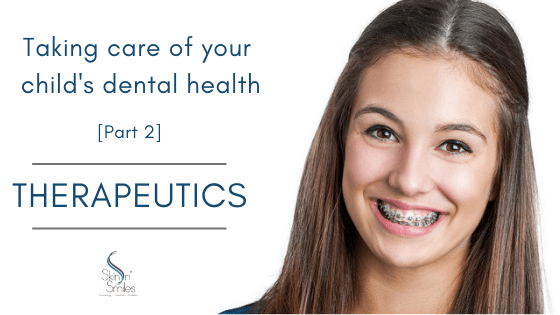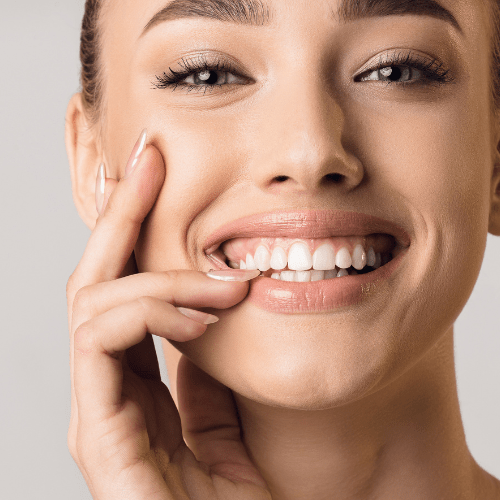Take Care Of Your Chid’s Dental Health: Part 2 – Therapeutics
Sometimes with the best of your efforts managing your child’s oral health and hygiene, they will face dental health issues. Some would require quick treatment whereas others may require a more longer term intervention. That’s why it is important to take your child for regular dental check-ups, because it is best if the problems are caught and corrected early, before they lead to more serious issues.

Baby Teeth Need Care Too
Sometimes if parents notice an issue with their child’s baby tooth, they feel like they can ignore it because baby teeth are going to fall off eventually anyway. But saving a baby tooth may be just as important as saving a permanent tooth. Untimely loss of baby teeth, for instance due to decay, can cause long term issues like interference with speech development. More seriously, it can affect the alignment of developing permanent teeth.
Here are some therapeutic treatments that can help address your child’s dental health issues.
Cavity Fillings
Cavities do not always have symptoms, and therefore may not be easy to spot until the tooth decay becomes much worse. That’s why it is important to take your child for regular dental check-ups, as a dentist can spot and treat cavities in time.
Depending on the nature and severity of decay, cavities can be treated using fillings, also referred to as direct restorations. Fillings are materials placed in teeth to repair damage caused by tooth decay (caries or cavities). For children the material used is typically glass ionomer cement or composite materials which are tooth-coloured. Fillings typically require only a single visit to the dentist. The dentist will drill the tooth decay from your child’s teeth as necessary, and place the filling directly into the tooth.
Crowns
A dental crown is a tooth-shaped cap that is placed over a tooth, to cover the tooth. Dental crowns are used to protect a tooth weakened by decay from breaking, to restore or hold together a cracked or chipped tooth. Depending on the damage caused by the tooth decay, your dentist may advise treatment using crowns, also referred to as indirect restorations, instead of just fillings. Crowns cover and support the tooth with a large filling when most of the tooth has been damaged. Crowns are also used to address incorrectly shaped teeth, and underdeveloped teeth. Pediatric crowns are different from adult crowns as they are usually preformed and are made of different materials like stainless steel, polycarbonate etc. Crowns don’t require special care, but they also don’t protect the teeth from further decay or oral diseases. So it is important to have your child continue to follow good oral hygiene.
Root Canals
Deep decay from dental caries (cavities) or trauma to the tooth (for instance, from getting hit by a ball) can damage the interior of the teeth, called the pulp. The pulp branches through passageways called canals which extend into the tooth roots. Pulp is important in the growth of teeth. Once they are fully formed though, the teeth don’t need them anymore. Decay or damage to the pulp can be treated with the root canal treatment – during which your Endodontist removes all the pulp from inside the tooth to eliminate infection. Once the pulp is removed, the empty space is disinfected, sterilized, and filled. She will then place a crown or other restoration, sealing the tooth to prevent any further decay. Our Endodontist performs the root canal under local anesthesia that completely numbs the affected tooth, so your child does not experience any pain.
In some instances, when your dentist judges that only the superficial pulp is infected and not the deeper pulp (in the roots) , then she might suggest a partial root canal / pulpotomy. Pulpotomy treated tooth should also be monitored closely for any symptoms of pain or swelling and once ok, the tooth should be covered by a crown.
Orthodontics for Teeth
Crooked teeth and teeth that are misaligned can be harder to brush, and so are at a greater risk of developing cavities, decay and periodontal disease. Left uncorrected, misaligned and crowded teeth can cause long-term issues including headaches, neck and back pain. They also affect your child’s self-esteem as they worry about their appearance.
Early intervention from a good Orthodontist can correct these problems. These days, children have a range of options in braces – ranging from metal to colourful braces and even invisible aligners, all of which can permanently fix alignment issues. Typically, braces need a commitment of one to three years, but given their long-term benefits the investment is worthwhile. Acting early to fix your child’s teeth keeps the problem from getting worse, and lets the child have a less painful and uncomfortable experience.
Orthodontics for Jaws
Misaligned jaws are not only aesthetically unappealing, if left untreated they can lead to serious issues for your child, like wear and breakage of the teeth, speech problems, pain, and in severe cases even interfere with eating and breathing. Two of the most noticeable types of jaw misalignment are upper jaw protrusion where the upper teeth protrude, and reverse bite where the lower teeth sit in front of the upper teeth.
Depending on the nature and degree of jaw misalignment, our Orthodontist will use a variety of orthodontic appliances to fix the problem, and the treatment may take one to three years. Some appliances for jaw correction are Functional appliances like twin blocks, chin cups, head gears and expanders. Jaw misalignment are best taken care of at a young age, before they worsen or cause further complications for your child. With a good orthodontic intervention, it can be corrected.
Extractions
Your child may need a tooth extracted if it is severely decayed or to correct a crowding issue. Sometimes, the Orthodontist may need to do extractions in preparation for braces. Extractions are also required if the child’s baby teeth fail to fall out before permanent teeth come in. In such a scenario, your dentist may suggest putting a space maintainer.
While by the sound of it, extractions may be a scary experience for your child, understanding the process, and our doctors positive behaviour management as well as the use of local anesthesia all help make the process easier.





